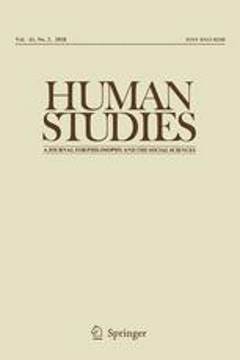Repository | Journal | Volume | Articles

(1996) Human Studies 19 (3).
The experience of spatiality for congenitally blind people
a phenomenological-psychological study
Gunnar Karlsson
pp. 303-330
This phenomenological-psychological study aims at discovering the essential constituents involved in congenitally blind people's spatial experiences. Nine congenitally blind persons took part in this study. The data were made up of half structured (thorough) interviews. The analysis of the data yielded the following three comprehension forms of spatiality; (i) Comprehension in terms of image-experience; (ii) Comprehension in terms of notions; (iii) Comprehension in terms of knowledge.Comprehension in terms of image experience is the form which is most concretely and clearly experienced. It is important to notice, that this kind of image experience is not synonymous with a visually based image experience — a fact which is discussed in the article. The following three features, which are to be understood as a description of what characterizes congenitally blind people's image experience, are presented; (i) Experience of the whole; (ii) Synthesizing/Harmonizing; (iii) Spontanous presentation of the whole. Furthermore, comprehension in terms of image experience is made up of the following four constituents, which aim at specifying the conditions for the possibility of having an image experience; (i) The image experience is based on tactile experiences; (ii) The inner horizon of the object has to be limited in order for the tactile sense to constitute an image experience; (iii) The person must have reached a certain degree of familiarity with the object; (iv) The importance of the emotional investment in the object.Comprehension in terms of notions can roughly be said to contain a mixture of sensory experiences and explicit cognitive processes. The third and most abstract form of comprehension is comprehension in terms of knowledge, which is exclusively constituted by means of cognitive processes. This third form is briefly characterized by the following; (i) The comprehension is not based on sensory experiences, but conveyed through the descriptions of other people; (ii) The comprehension is not tied to clear personal experiences, but is characterized by a general description; (iii) The comprehension is not contextual, but has a stereotype character.
Publication details
DOI: 10.1007/BF00144024
Full citation:
Karlsson, G. (1996). The experience of spatiality for congenitally blind people: a phenomenological-psychological study. Human Studies 19 (3), pp. 303-330.
This document is unfortunately not available for download at the moment.


